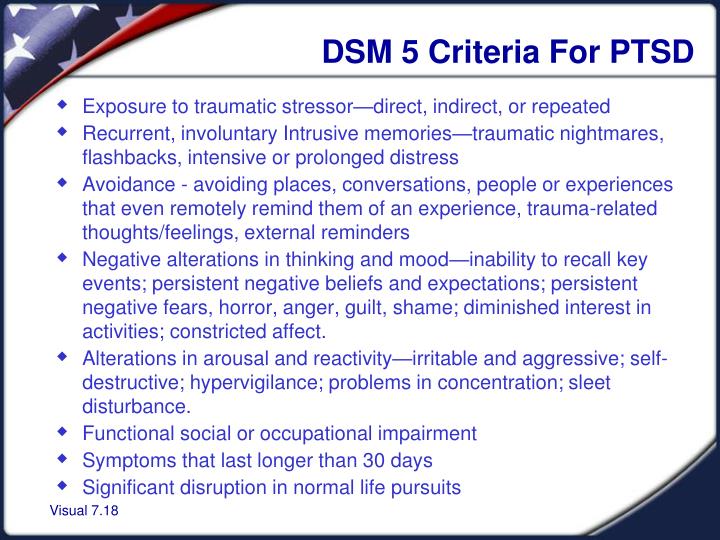

Young children with PTSD may develop problems with bedwetting, inability to speak, or unusual behavior, and older children may feel guilt or they may feel the need for revenge, which can lead to destructive behavior.įor over a decade after the attack at the World Trade Centers, The New York City Health Department World Trade Center Health Registry has been studying the effects of the attack on people surrounding Ground Zero. Symptoms also include the inability to remember details about the event, having negative thoughts, feelings of guilt, or loss of interest in activities that were enjoyed prior to the traumatic event (NIMH » Post-Traumatic Stress Disorder). There is a wide range of symptoms of PTSD that include having flashbacks, nightmares, or terrifying thoughts, avoiding anything that may remind the sufferer of the event, feeling tense and easily startled, suffering from insomnia, or having poor anger management. In order to be diagnosed with PTSD, one must suffer from symptoms for at least one month and according to the National Institute of Mental Health, the symptoms of diagnosed PTSD are so severe, they interfere with work and relationships (NIMH » Post- Traumatic Stress Disorder). Sometimes, the death of a loved one can cause the development of post traumatic stress disorder, or PTSD. Post traumatic stress disorder is developed when a person experiences a terrifying or dangerous event and can be developed at any age. Although post traumatic stress disorder is not a new mental disorder that was manifested solely by 9/11, PTSD from the terroristic attacks occurred on such a large scale and was so uncommon that it challenged mental health care practitioners, changed the way mental health is assessed and treated, and prompted professionals to question mental health care treatments that were unmeasured before September 11, 2001. and another plane, which instead of making it to the hijacker’s target, landed in a field instead. However, the attacks were not only limited to the World Trade Center, but also to the Pentagon in Washington D.C. The Guardian estimated that at least 422,000 New Yorkers suffered from post traumatic stress disorder (Templeton & Lumley, 2002). The aftermath of the attack included a long list of health problems for those around Ground Zero, with the psychological condition, post traumatic stress disorder, being the most common among the population. Major depressive disorder, bipolar disorder, post-traumatic stress disorder, traumatic brain injury, obsessive compulsive disorder, and schizophrenia each substantially limits brain function.When the airplanes flew into the World Trade Centers on September 11, 2001, thousands of first responders were called to Ground Zero where they spent days digging through the rubble in search of victims and survivors, and spent the following months cleaning the site of the attacks.Human Immunodeficiency Virus (HIV) infection substantially limits immune function and.Epilepsy, muscular dystrophy, and multiple sclerosis each substantially limits neurological function.Diabetes substantially limits endocrine function.Cerebral palsy substantially limits brain function.Cancer substantially limits normal cell growth.Autism substantially limits brain function.Partially or completely missing limbs or mobility impairments requiring the use of a wheelchair substantially limit musculoskeletal function.Intellectual disability substantially limits brain function.Impairment that substantially limits a major life activity include, but are not

Chapter 16: Information on Section 504 and Disability-Based Discrimination.Chapter 15: Information on the Rights of Students with Behavioral Needs and Students Who are Bullied.Chapter 14: Information on the Rights of Students with Significant Health Conditions.Chapter 13: Information on Preschool Education Services.Chapter 12: Information on Early Intervention Services.Chapter 11: Information on District-Wide Assessments/Graduation Requirements.Chapter 10: Information on Transition Services Including Vocational Education.Chapter 9: Information on Interagency Services (AB 3632).Chapter 8: Information on Discipline of Students with Disabilities.Chapter 7: Information on Least Restrictive Environment.Chapter 6: Information on Due Process/Compliance Procedures.Chapter 5: Information on Related Services.Chapter 3: Information on Eligibility Criteria.Chapter 2: Information on Evaluations/Assessments.


 0 kommentar(er)
0 kommentar(er)
